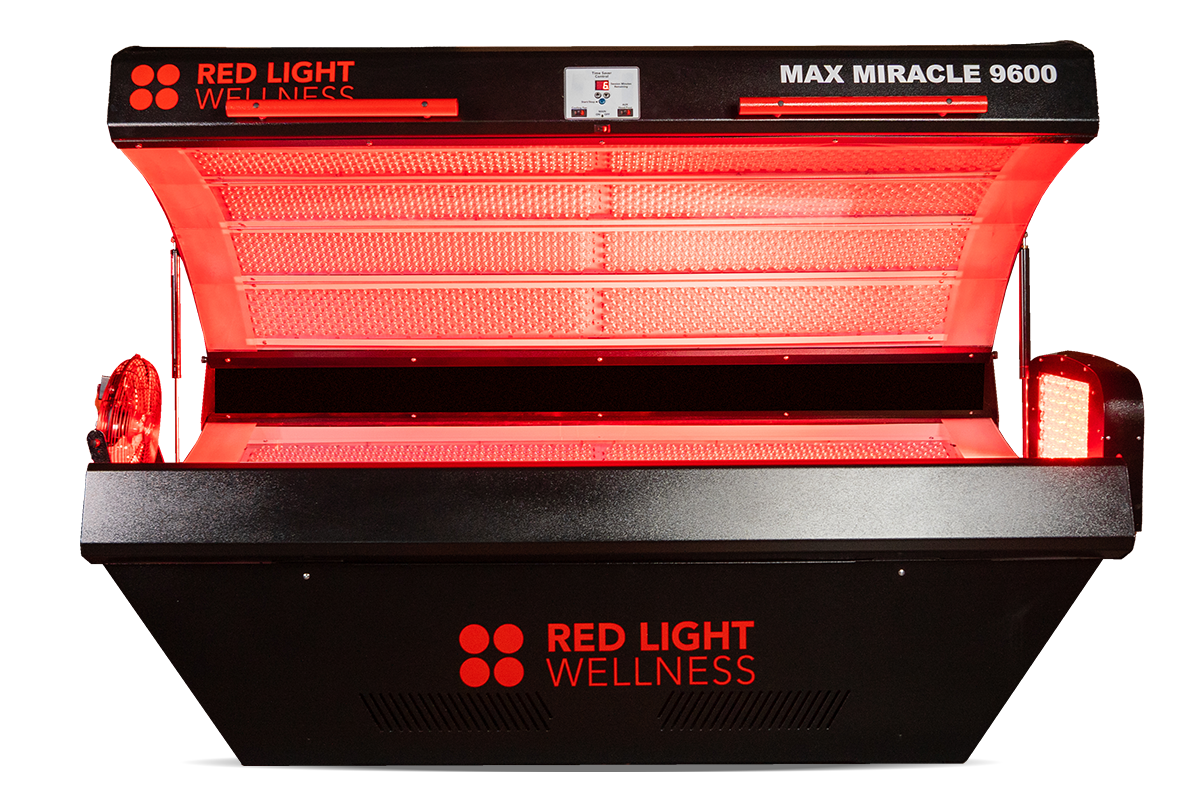Red Light Therapy in Tissue
As caregivers, your role often extends to managing pain, aiding in recovery, and ensuring overall well-being for those in your care. One emerging tool that has shown substantial benefits for tissue health is red light therapy (RLT). Grounded in science, RLT is now widely used in clinical and wellness settings to reduce pain, enhance healing, and improve skin and cellular health. This article explores how RLT works, its benefits on various tissues, and how it can be an essential tool for caregivers.
How Red Light Therapy Works on a Cellular Level
Red light therapy penetrates the skin and underlying tissues, influencing cellular health and energy production at the foundational level.
Mitochondrial Stimulation: RLT stimulates the mitochondria, the "powerhouse" of cells, which increases the production of adenosine triphosphate (ATP). ATP fuels cellular processes that are crucial for tissue repair and regeneration, making it especially beneficial in wound care and healing.
Nitric Oxide Release and Vasodilation: Exposure to red light encourages nitric oxide production, which promotes blood flow and reduces inflammation. Improved circulation supplies oxygen and nutrients essential for recovery, making it particularly effective for muscle and joint health.
Reduction of Oxidative Stress: By lowering oxidative stress, RLT aids in the repair of damaged cells and helps reduce pain from inflammation—a significant advantage for patients experiencing chronic pain or inflammatory conditions.
These cellular-level effects make red light therapy a versatile option for managing various health challenges.
Choosing the Right Wavelength for Tissue Health
Red light therapy typically employs wavelengths between 600-900 nm. Each range has specific applications:
Visible Red Light (600-700 nm): Effective for surface-level treatments, it benefits skin and upper tissue layers, commonly used in aesthetic treatments.
Near-Infrared Light (800-900 nm): Penetrates deeper into muscles and joints, supporting recovery for conditions that affect these areas, such as arthritis or muscle strains.
Understanding these wavelength distinctions ensures caregivers can recommend appropriate devices or treatments based on individual needs.
Red Light Therapy Benefits for Key Tissue Types
Red light therapy has diverse applications across different tissue types, each with unique benefits.
Skin Health and Anti-Aging
Red light therapy stimulates collagen production, essential for skin elasticity and reducing wrinkles. For patients concerned with skin health, RLT offers non-invasive support that rejuvenates the skin and assists in wound healing.
Muscle Tissue Recovery
For muscle recovery, RLT reduces inflammation and promotes quicker healing post-exertion. This is beneficial in sports medicine but also valuable for elderly patients experiencing muscle pain or stiffness.
Connective Tissue and Joint Health
RLT aids in connective tissue repair, which supports joint health. For patients with arthritis or those recovering from injuries, red light therapy provides an effective, drug-free method to alleviate pain and promote tissue repair.
Nerve Cells and Pain Modulation
Red light therapy can reduce pain perception by promoting nerve cell health. This is particularly useful for patients with neuropathy or chronic pain conditions, offering a non-invasive means of pain management.
Targeted Cellular and Structural Benefits of Red Light Therapy
Beyond general tissue benefits, red light therapy impacts cellular structures in ways that directly enhance healing and reduce discomfort:
Improved Cellular Energy Production: Increased ATP production accelerates cellular processes, supporting energy levels and tissue repair.
Inflammation Modulation: By reducing inflammatory markers, RLT provides relief for chronic inflammatory conditions, such as arthritis, often resulting in significant pain reduction for patients.
Enhanced Blood Flow and Circulation: RLT promotes blood flow, supplying damaged tissues with essential nutrients and oxygen. This accelerates recovery, particularly beneficial for patients with compromised circulation.
Practical Applications of Red Light Therapy for Caregivers
As a caregiver, integrating RLT into your care routine can support various health goals.
Wound Healing and Skin Regeneration: Effective for managing wounds and scars, RLT is an accessible option for skin health maintenance.
Pain Management and Inflammation Control: RLT has been shown to relieve pain associated with arthritis and joint inflammation, allowing caregivers to manage chronic pain naturally.
Support for Athletic Recovery: For patients engaging in physical therapy or athletic recovery, RLT enhances muscle repair, making it an excellent adjunct for faster recovery.
Safety and Guidelines for Red Light Therapy Use
Red light therapy is generally safe, non-invasive, and without significant side effects. Here are some best practices for caregivers:
Session Length and Frequency: Short sessions, about 10-20 minutes, are usually effective. Frequency varies based on the condition, but many protocols recommend 3-5 times per week.
Device Selection: Choose devices with appropriate wavelengths for specific applications, especially if they’ll be used for deeper tissues or specific therapeutic purposes.
Following these guidelines can ensure that RLT is both safe and effective for various conditions.
Conclusion: Red Light Therapy as a Caregiving Tool
Red light therapy is an effective, versatile tool for promoting tissue health, reducing pain, and enhancing healing. As a caregiver, leveraging this technology allows you to provide an additional level of care, especially for those dealing with chronic pain, recovery needs, or age-related tissue challenges. By understanding the cellular benefits and specific applications of red light therapy, caregivers can make informed decisions that contribute to improved health outcomes and quality of life for those in their care.
Red light therapy isn’t just a trend; it’s a scientifically backed solution that holds promise for better patient care.




